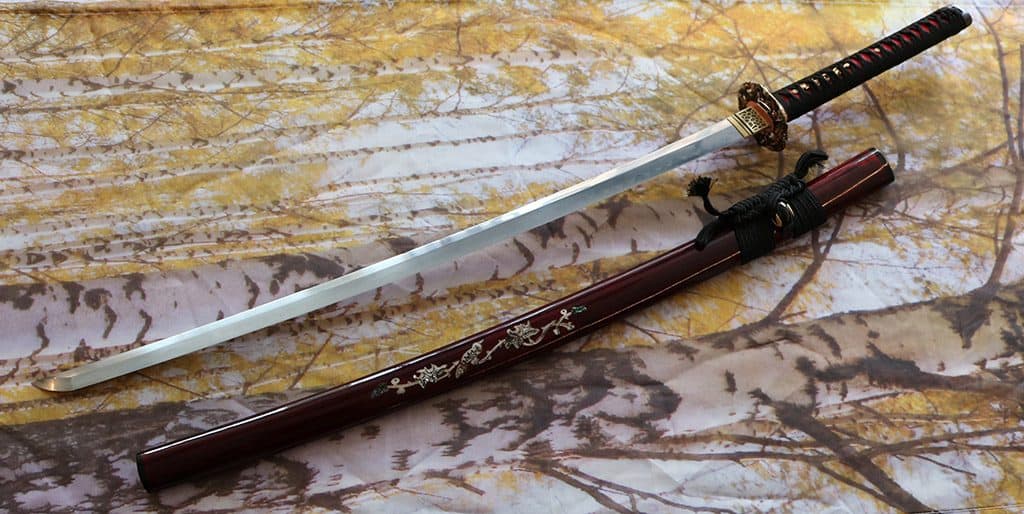
I always thought that medieval sword terminology is complicated. A few years ago when I first heard of the different katana parts and components it completely blew my mind.
There were so many indistinguishable words for sections of the Japanese swords. Therefore, I had to do a lot of research.
And because I don’t want to bore you with bad infographics, I created a real-life example for you. I fetched one of my katanas off the shelf and took some great pictures. So, you can learn about the different katana parts the right way.
Table of Contents
Main Katana Parts
First things first, a katana has three main parts.
Blade – Steel component of the katana which is used for cutting.
Tsuka – The handle of the sword.
Saya – Scabbard of the sword used to protect the blade. Constructed from wood.
All Katana Parts Explained
In this section, you will find detailed information on all the parts and components of a samurai sword.
Blade
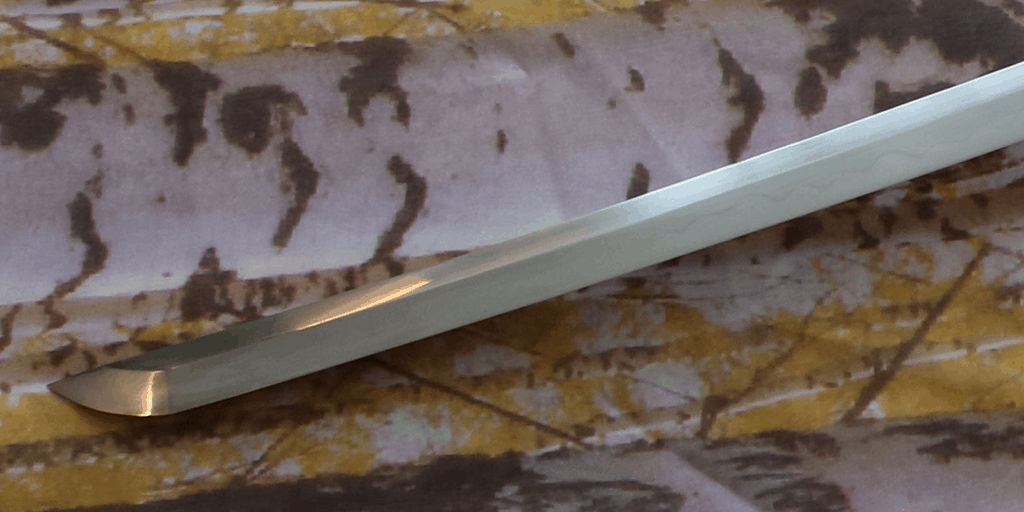
Obviously, the blade is the most important component of a sword. Traditional Japanese Katanas were forged from steel containing more than 4% of carbon.
Thus, the Japanese swordsmiths had to come up with a solution to reduce the carbon content. Since a Sword with more than 1% of carbon becomes too brittle.
They found a method called folding. This gives the katana a very special look and makes the parts of the blade quite different in comparison to European swords.
Furthermore, Japanese swordsmiths used a forging technique called differential hardening, which creates the look the katana is most famous for. In case you want to learn more about sword steels and forging techniques you can check it out.
Kissaki
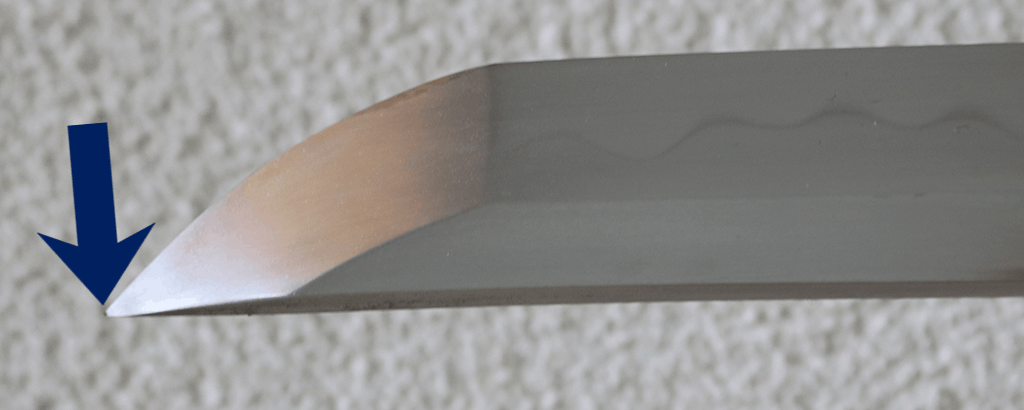
The kissaki is the point of the blade. In contrast to the medieval swords, the shape of the blade tip is different. While European swords usually form their point in the centre, the kissaki lies on the edge of the blade.
The kissaski plays a key role in the enormous cutting abilities of a katana. It is designed to improve the lethality of the blade, by adding the possibility for thrusting attacks. Otherwise, the blade could only be used for cutting, which severely reduces the options the wielder has.
After all, every katana has a kissaki. The kissaki can vary in size.
Boshi
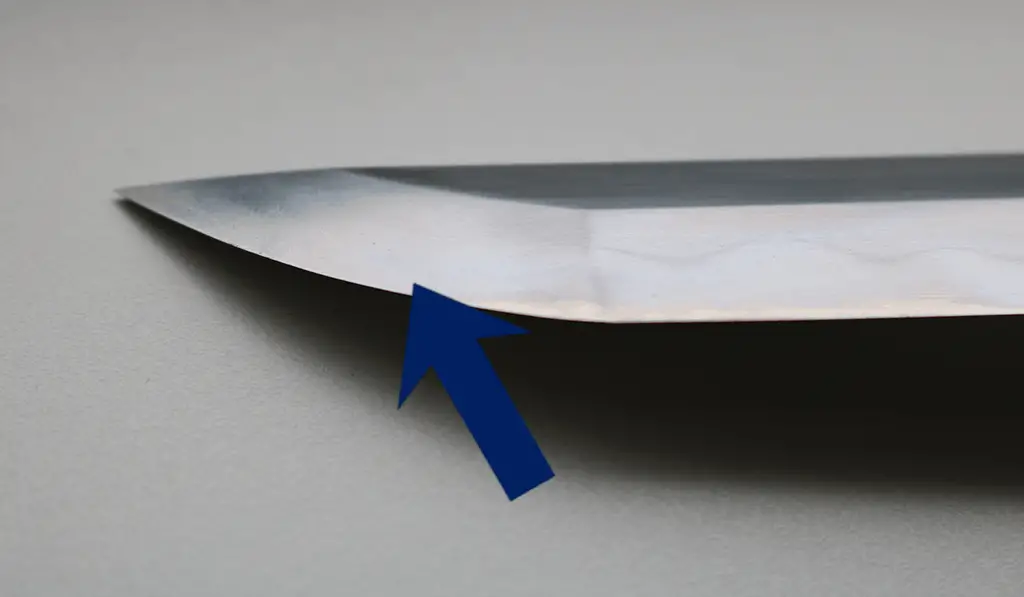
The Boshi is the temper line of the kissaki. Only differentially hardened katanas have a temper line.
Yokote
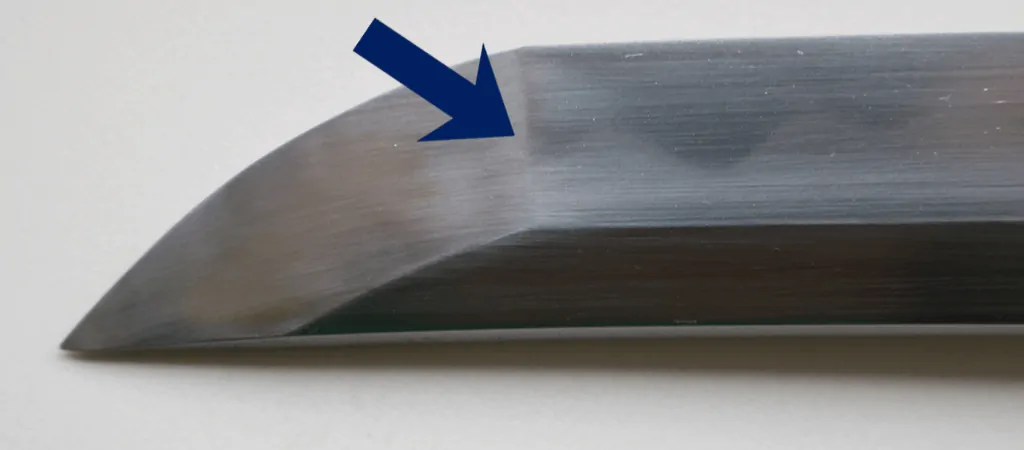
The Yokote is the dividing line between the kissaki (point) and the body of the blade. Most katanas have a yokote although there are some exceptions. On some katana types, the tip of the blade is rather used for slicing instead of thrusting.
Hasaki/Ha

Hasaki, also called Ha, is the tempered cutting edge of the blade.
Mune
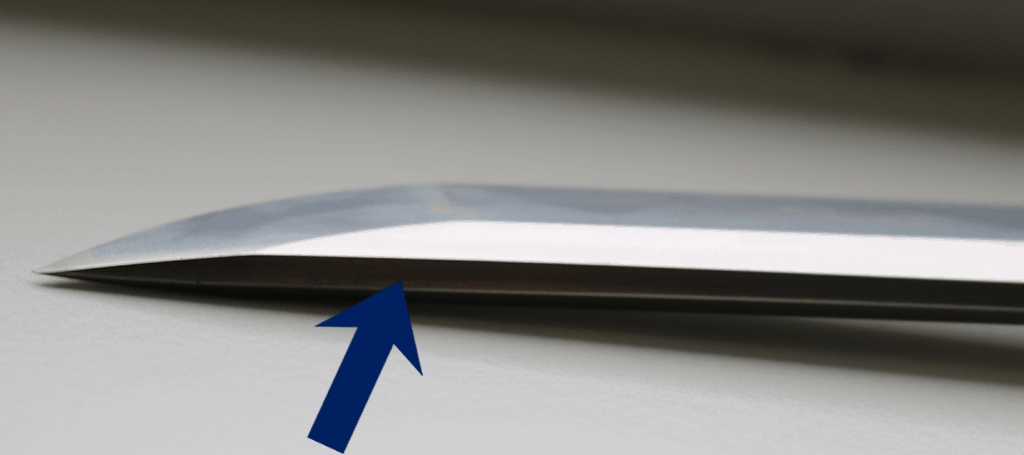
The mune is exactly the opposite of the hasaki. Instead of a sharp edge used for cutting it is the blunt back edge of the blade.
Ji
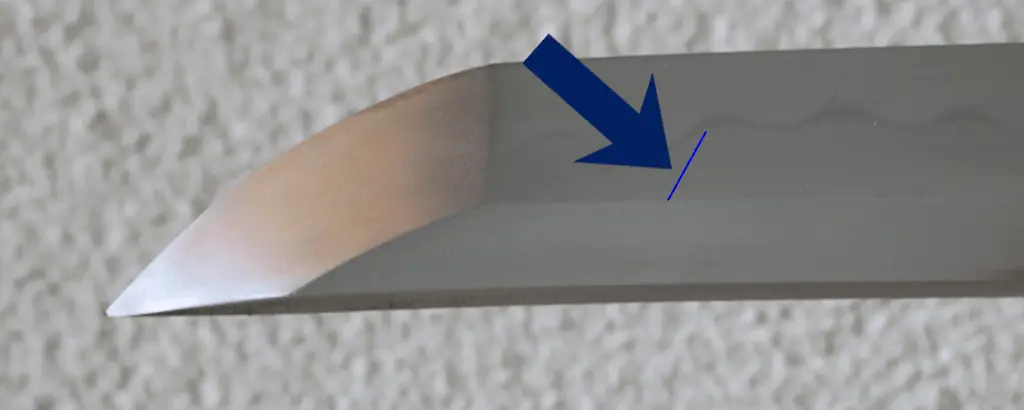
This is the part of the sword between the ridge (shinogi) and the temper line (hamon).
Mono-Uchi
The Mono-Uchi is the third of the blade that is closest to the kissaki (point). The equivalent to the European sword is called debole.
Shinogi
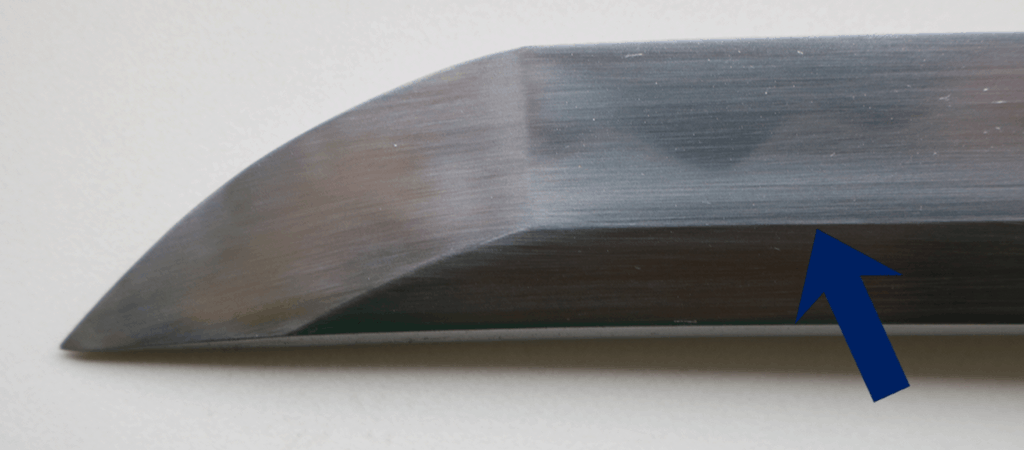
The shinogi is the ridge running along the the sword. Typically it is closer to the back (mune) than to the cutting edge (hasaki). At this line the blade transitions from the angled portion of the cutting edge to the flat section from the back of the sword.
Blades that do not have a shinogi are called Hira-Zukuri.
Shinogi-Ji
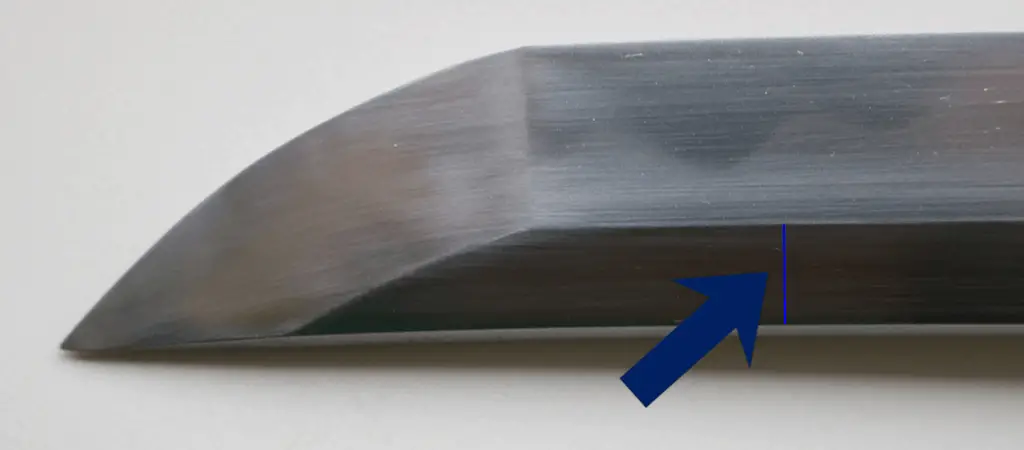
The Shinogi-Ji is the area between the shinogi and the mune (back).
Sori
The sori is not a real part of the sword. It measures the curvature of the blade.
Nagasa
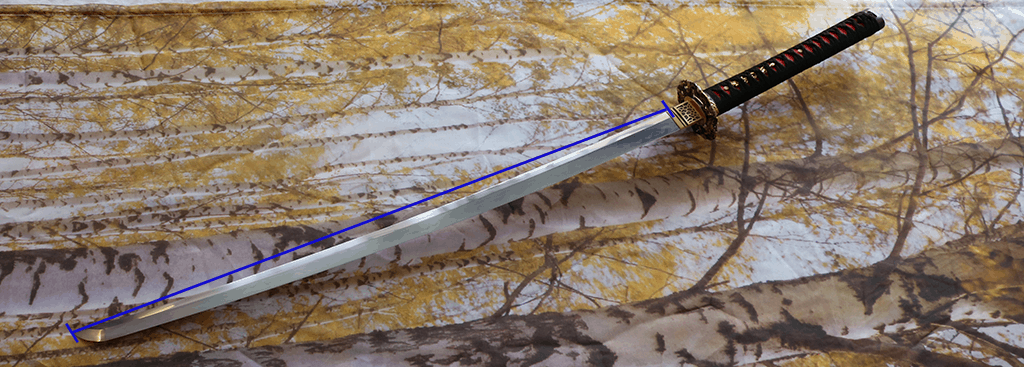
The nagasa is the length of the blade. It is measured in a straight line from the kissaki (point) to the habaki/munemachi.
Above you see an image of the nagasa measurement on the basis of one of my own katana.
Hi/Bo-Hi
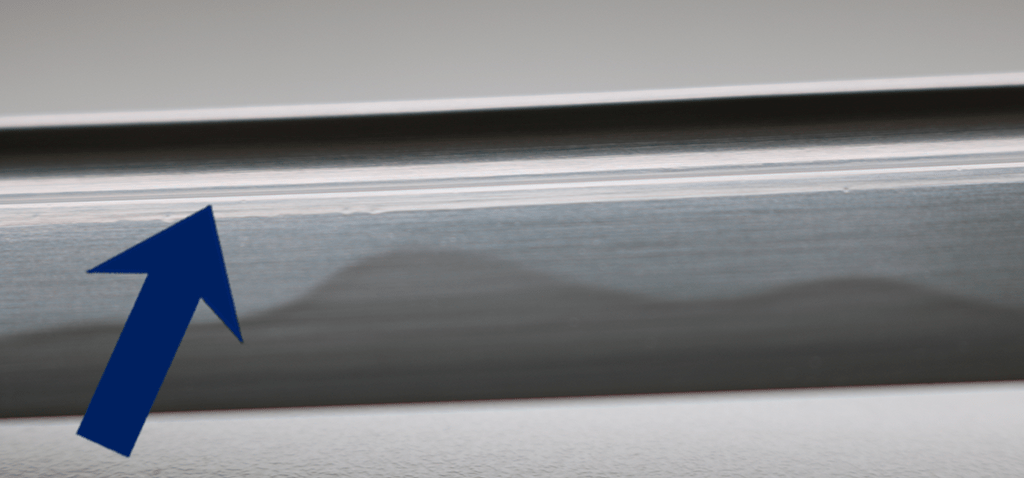
The hi is a groove carved into the blade. Like the fuller of a medieval sword, its primary function is to reduce the weight of the sword. Not every katana has a bo-hi.
Hamon

The hamon line is a side-effect of clay tempering the blade. By differentially tempering a sword a line is created that separates the part of the sword that was covered in clay and the uncovered part.
Traditional Japanese katanas are differentially tempered to increase the durability of the sword. In this post, you can find out more about clay tempering and sword steels.
Tsuka

The tsuka is the other main part of the katana. The tsuka is the handle of the sword. As with the blade, the tsuka is also divided into many small sub-sections.
Habaki

The habaki is the metal collar located at the base of the blade. Although this component is quite small it serves a very important function. The habaki supports the stability of the sword during its storage in the scabbard (saja).
Another purpose of this katana part is to strengthen the fittings below (seppa, tsuba, fuchi). The habaki is fitted at the hamachi and munemachi.
Munemachi

The munemachi is the small 3-5 mm (0.1-0.2 in) notch in the back of a Japanese sword’s spine (mune). It divides the blade and nakago (tang).
The habaki (blade collar) is slotted into both machi. The main function of the munemachi is to ensure a tight fit between the habaki and the blade.
Furthermore, when measuring the blade length (nagasa) of a katana you draw a straight line starting from the kissaki (point) up to the munemachi.
Hamachi
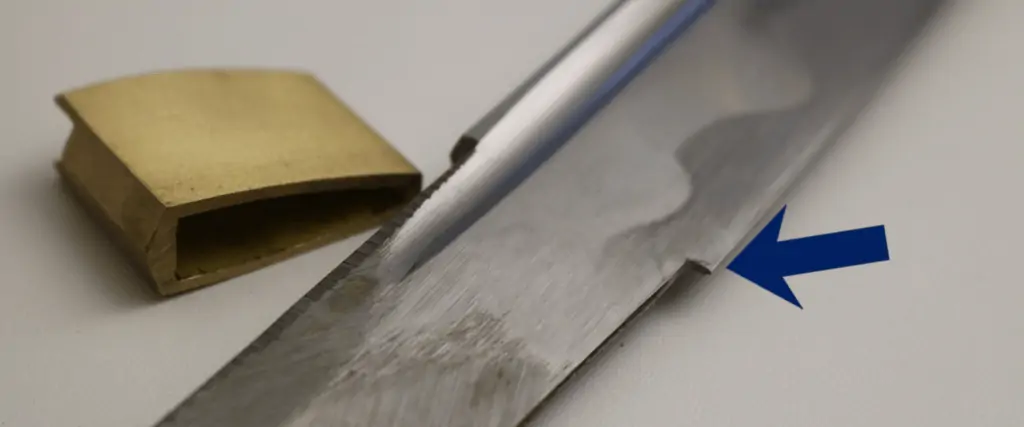
The hamachi is a small 3-5 mm (0.1-0.2 in) notch in the cutting edge (ha) of a Japanese sword. It divides the blade from the tang.
Alongside the munemachi, the machi’s main function is to ensure a tight fit between habaki and blade.
Tsuba

The tsuba is the guard of the sword. In general, the tsuba is round. Furthermore, it is quite common to decorate the tsuba. There are a lot of awesome designs for the guard. In my opinion, they look great.
Just as every regular guard the main purpose of the tsuba was to protect the hand of the wielder from cuts.
Seppa
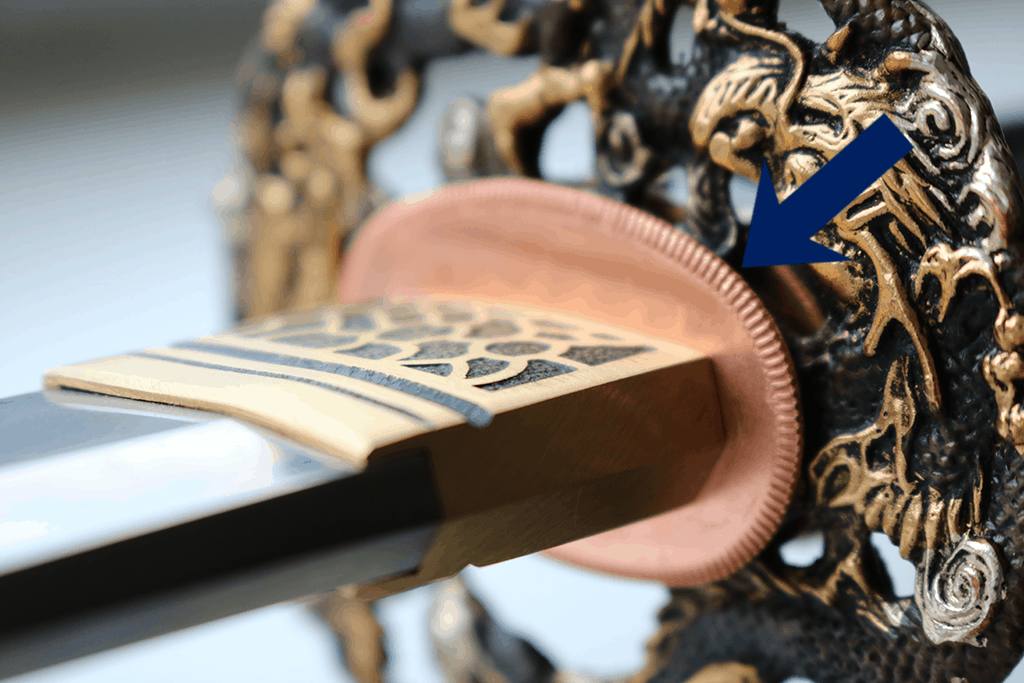
These tiny metal pieces are located on both sides of the guard (tsuba). They primarily serve as spacers.
Fuchi
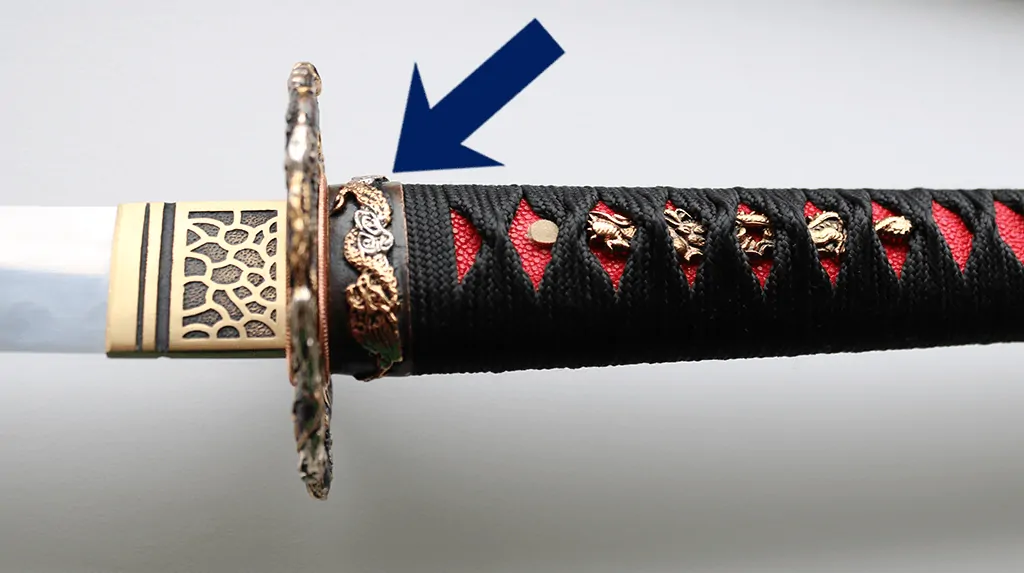
The fuchi is the collar between the guard and the handle of the sword. This ornament often features nature motives.
Menuki
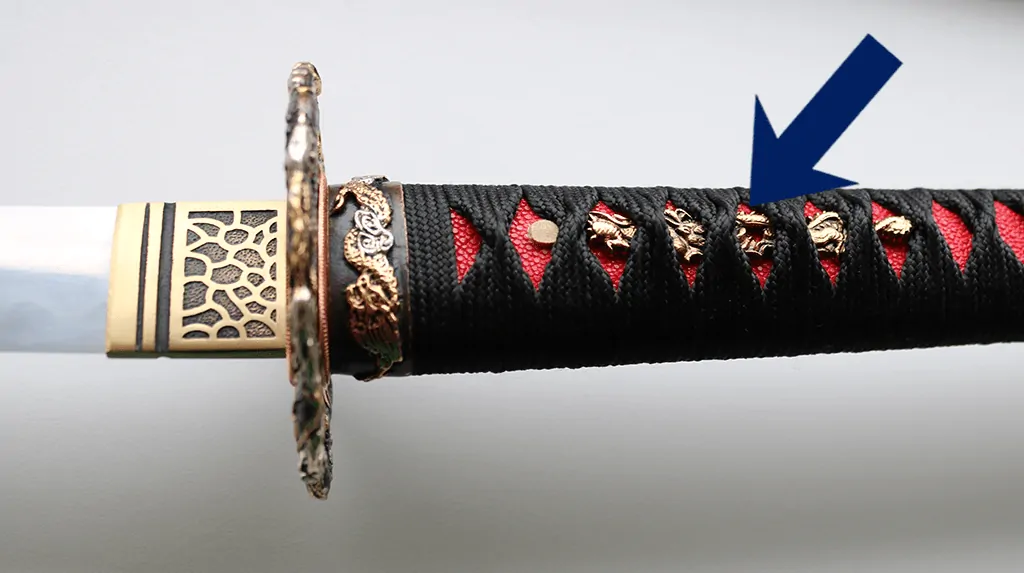
The menuki are small decorative sculptures. Most of the time they are depicting animals or mythological creatures, such as dragons. These ornaments are meant to fit into the palm to increase the grip.
Nakago

The nakago is the tang of the sword, which is hidden underneath the handle.
Mekugi
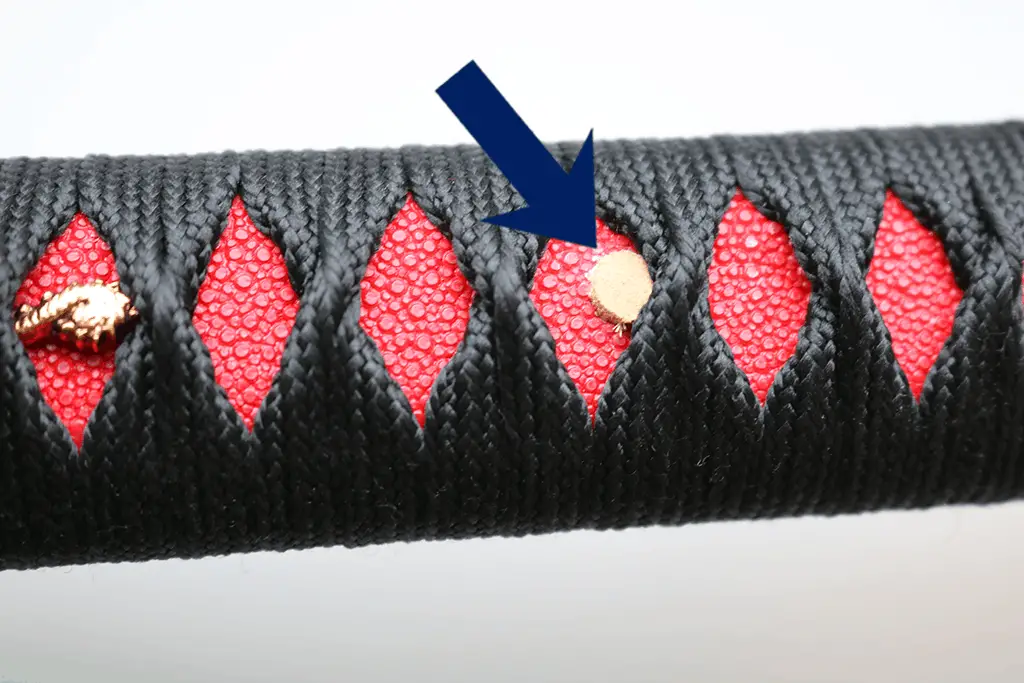
These are the small pegs that fix the sword’s tang (nakago) underneath the hilt. They are made of bamboo. Flexibility of this component is very important. When the sword gets impacted by a strike the mekugi should not break.
Tsuka-Ito
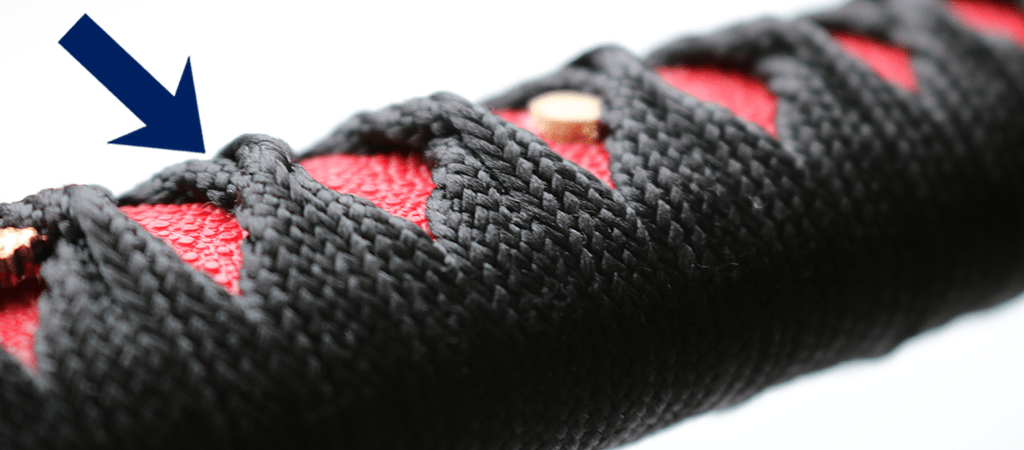
The tsuka-ito is the wrapping of the tsuka (handle). The tsukaito is created from silk or cotton.
Tsukamaki
Tsukamaki describes the technique used to wrap the tsuka-ito around the handle (tsuka).
Same-Kawa
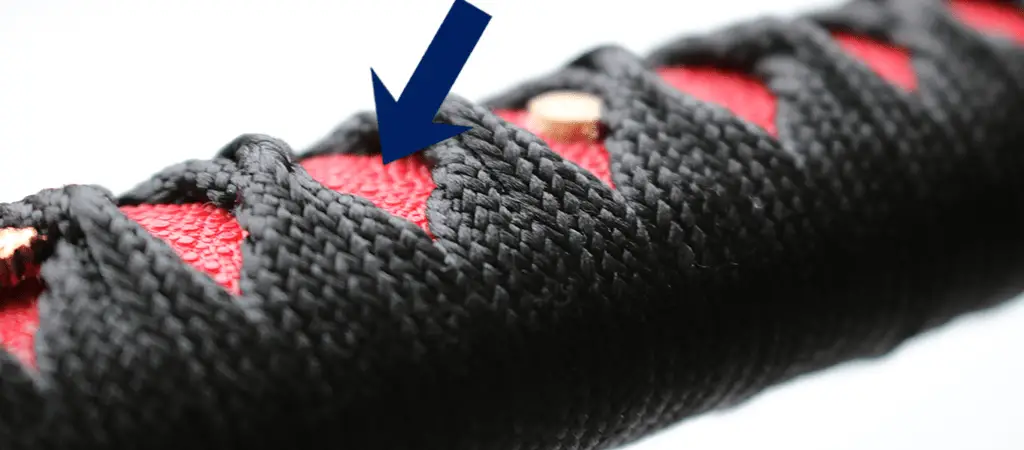
This is the ray or shark skin wrapping the handle of the sword. It is located under the tsuka-ito.
Same-Hada
Same-Hada is the pattern of the ray skin.
Kashira

This kashira is the last part of the katana. The European equivalent is called pommel. The kashira has a tiny hole, which is important in the makidome process.
Makidome
Makidome is the last process of wrapping the tsuka-ito silk around the hilt. The tsuka-ito normally forms a knot on one side of the tsuka (handle). The wrapping then goes through the kashira forming the final knot.
Keep in mind that there are many different techniques that can be used.
Saya

The saya is the scabbard of the katana. Normally it is manufactured from very lightweight wood with a coat of lacquer on the exterior.
Sageo
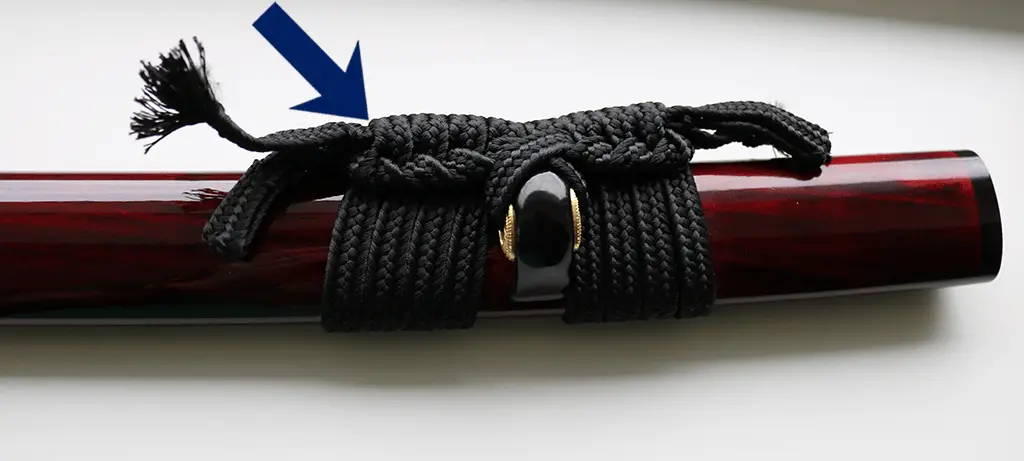
The sageo is a hanging cord made of silk, cotton or leather. The textile is passed through the hole of the kurikata. It is commonly used to attach the scabbard to the belt of the wielder.
Kurikata
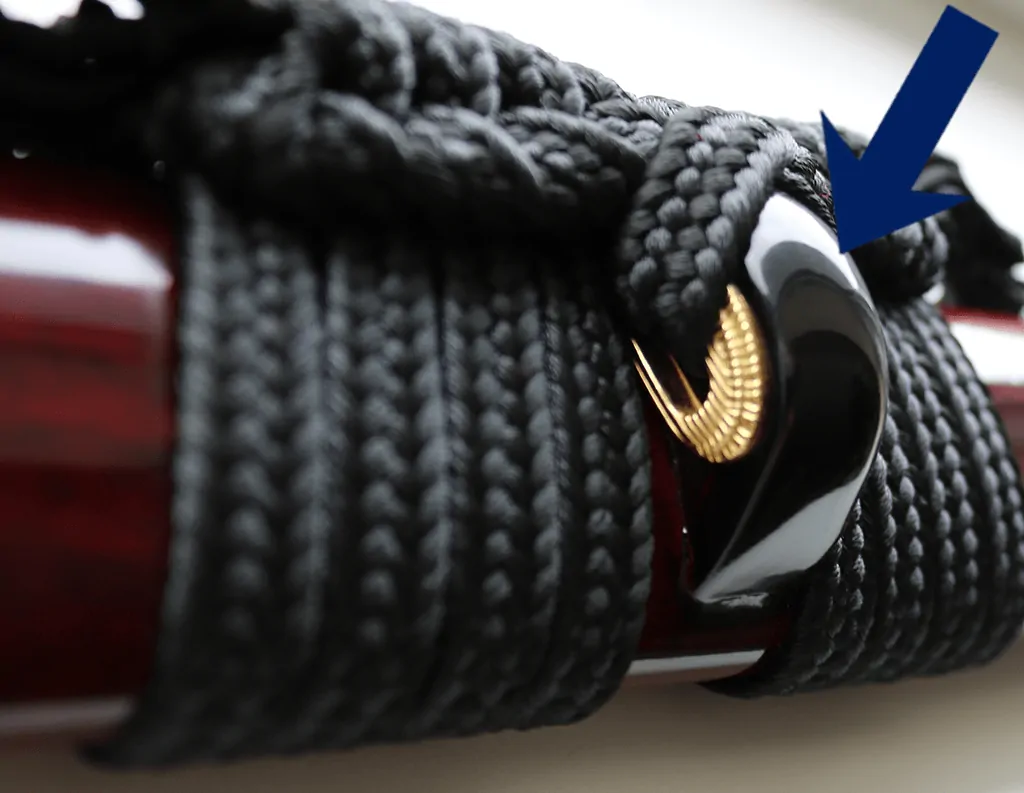
The kurikata is the knob that the sageo gets passed trough.
Shitodome
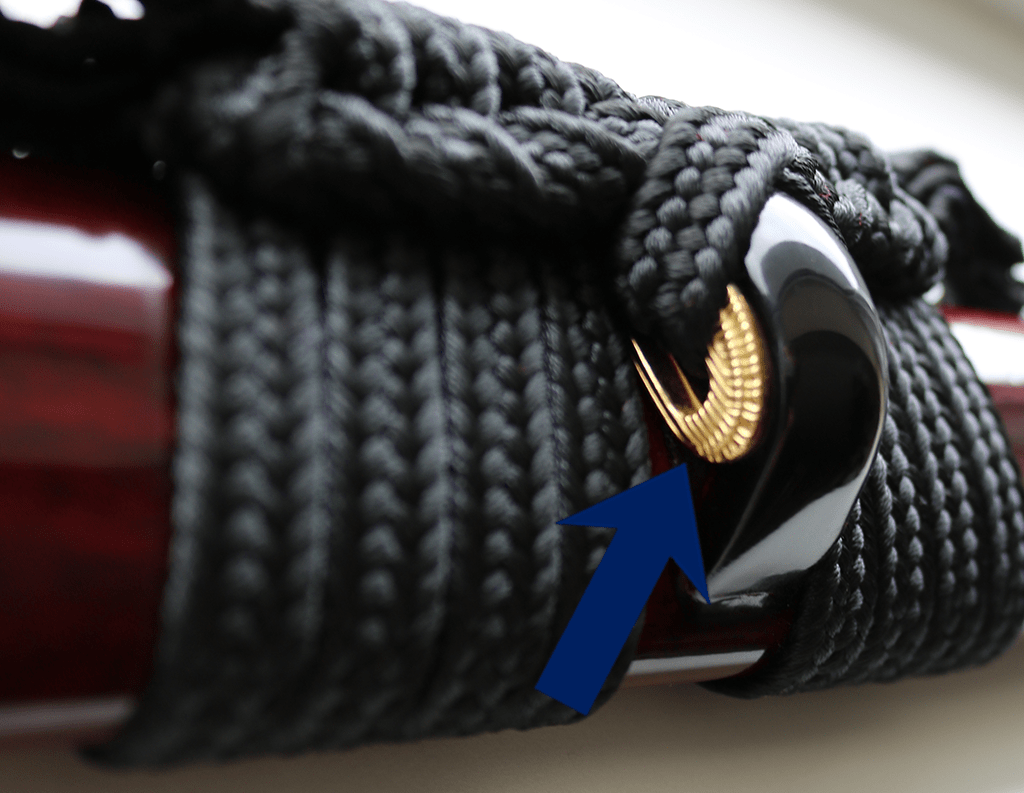
The fitting of the kurikata is called shitodome.
Koiguchi
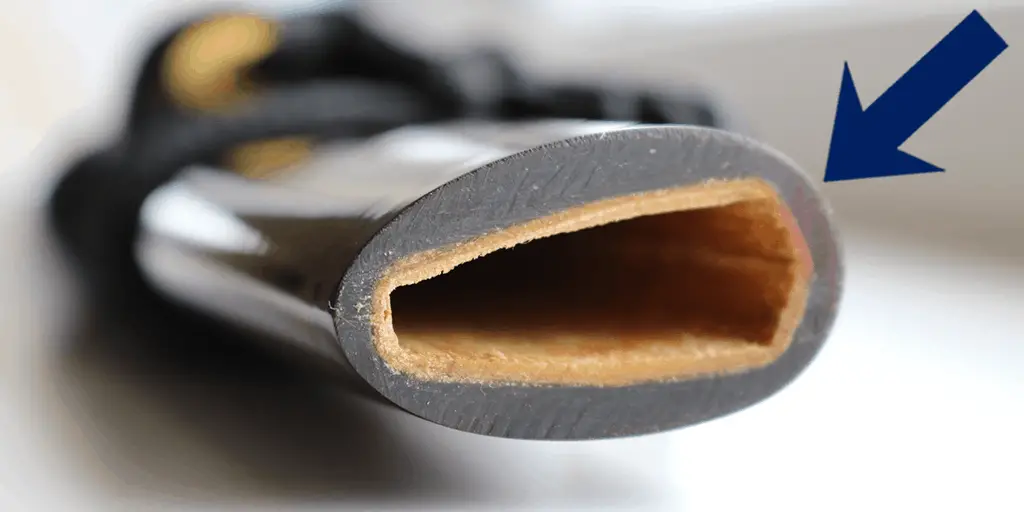
Koiguchi represents the scabbard mouth. When the sword is in the saya the koiguchi has direct contact with the habaki.
If the katana is crafted properly you can turn it upside-down without the sword falling out. However, you can also push the sword out easily with the force of your thumb.
Kojiri
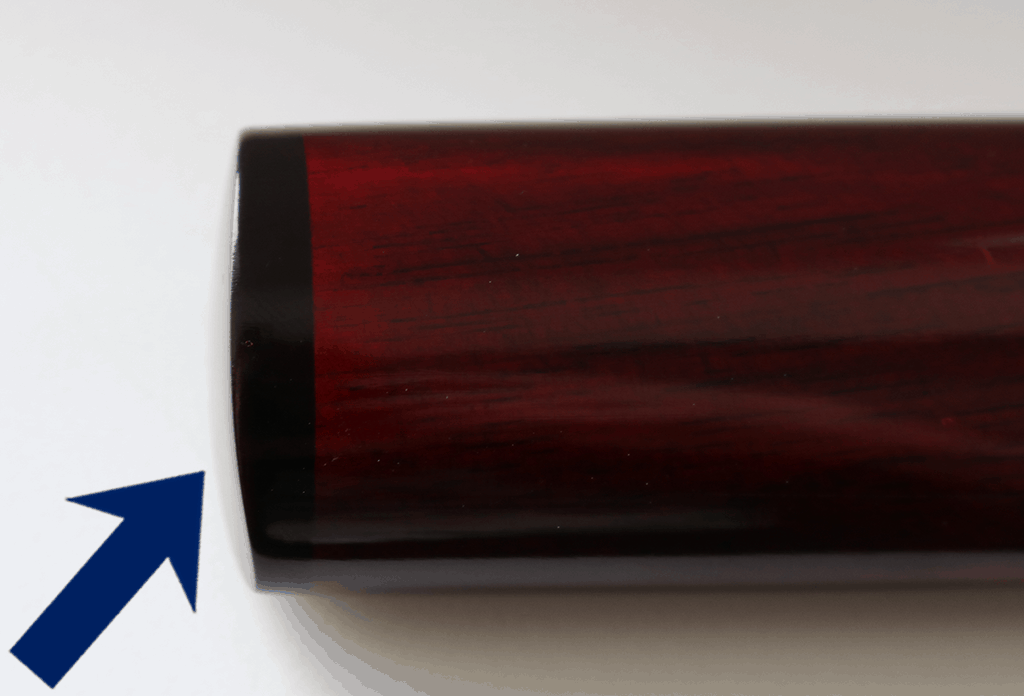
The Kojiri is the end-cap of the scabbard.
Conclusion
I hope I could provide you with the information you were looking for. If you got any suggestions make sure to leave them in the comment field below.
In case you are interested in medieval swords as well, then check out my post about the parts and components of medieval swords too.